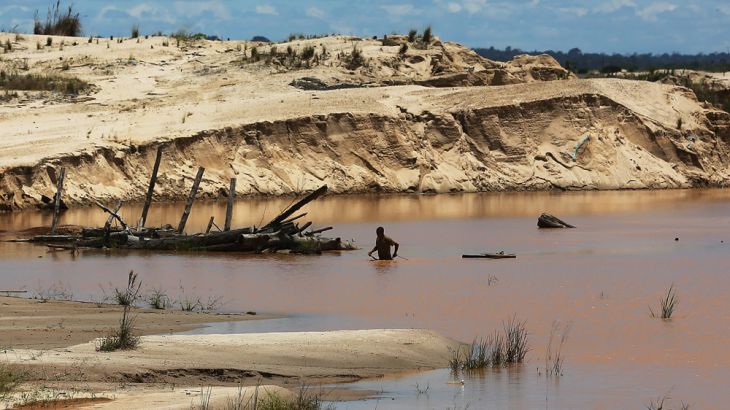
Gold at any cost: Illegal mining in Peru
We investigate how illegal gold mining in Peru is turning pristine Amazonian rainforests into toxic wastelands.
For more than 50 million years, the Amazon rainforest has been a cradle of life. Its pristine forests, however, are increasingly under threat because of illegal gold mining.
TechKnow‘s Phil Torres heads to La Pampa, the buffer zone of Tambopata National Reserve, to witness how illegal mining is turning forests into toxic wastelands. There, more than 100,000 acres of rainforest have been cleared.
Keep reading
list of 4 itemsHong Kong’s first monkey virus case – what do we know about the B virus?
Why will low birthrate in Europe trigger ‘Staggering social change’?
The Max Planck Society must end its unconditional support for Israel
Torres starts his investigation in Puerto Madonado, the capital of the Madre de Dios (“Mother of God”) region of Peru which is one of the world’s most biodiverse places and also the site of 70 percent of Peru’s illicit gold production. Mining has attracted people from all over the country and Puerto Madonado is home to an estimated 30,000 illegal gold miners.
Luis Fernandez directs the Carnegie Amazon Mercury Ecosystem Project and has been studying the toxic effects of the illegal gold rush since 2000.
Miners chop down trees and use high-pressure water hoses to dissolve the soil, he tells us. This technique can turn a primary rainforest into a barren wasteland in just a matter of days.
The miners also use mercury – which binds with gold and forms an amalgam. These miners are not only exposed to toxic mercury – the chemical and its vapours when they burn it off – they’re also contaminating the land and inadvertently poisoning food chains. Mercury magnifies, Fernandez says, explaining that the more it travels along the food chain the stronger the contamination becomes. Fish from these waters is ending up on dinner plates hundreds of kilometres downstream.
Greg Asner of the Carnegie Department of Global Ecology has developed a high-tech plane called the “Carnegie Airborne Observatory”. This aircraft captured aerial imagery of the devastation in 2013 and also has other features, such as a spectrometer that detects different chemicals. From an environmental perspective, Asner says the miners go “below the biologically active part of the soil, so deep in the soil that there isn’t a science to tell us this forest could ever recover”.
Ernesto Raez Luna, a former adviser of the Ministry of Environment, says there are government efforts to try and crack down on illegal mining.
He says, the mining is “sad beyond words. We are talking of some of the most biologically diverse forests on earth, places where you could spend two full hours watching just what’s taking place on one branch of one tree … I am absolutely convinced that human beings have a right to nature.”